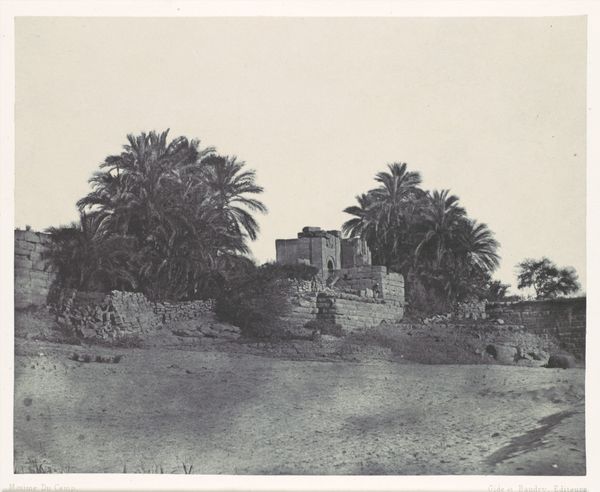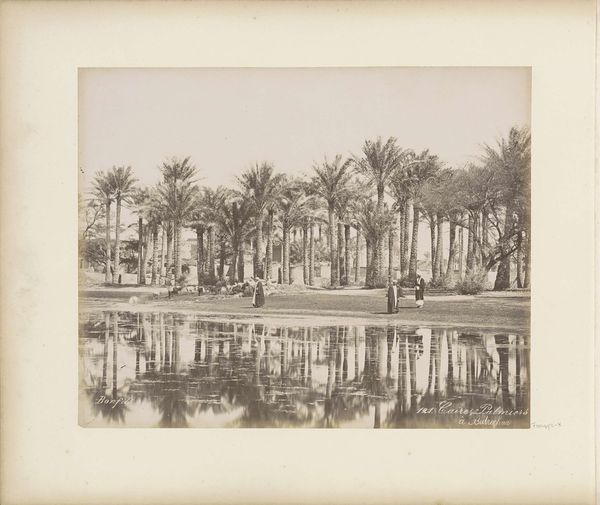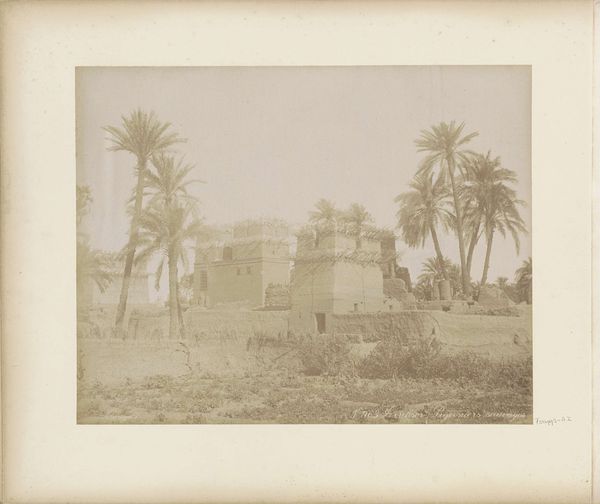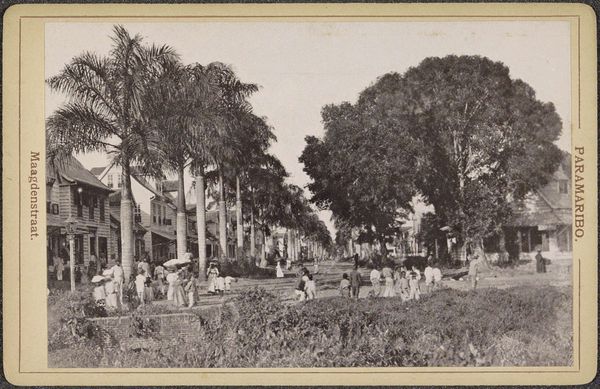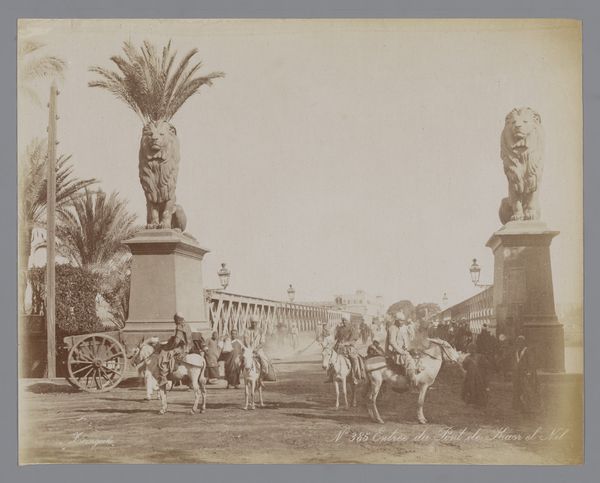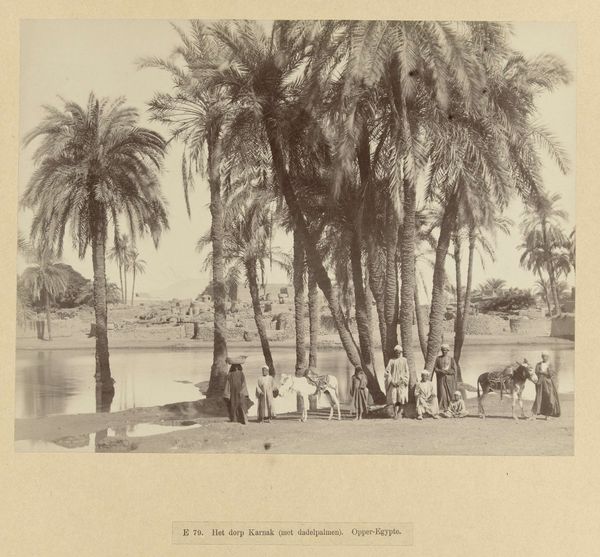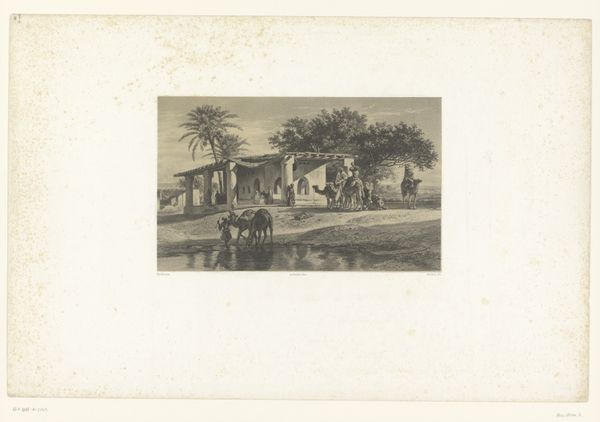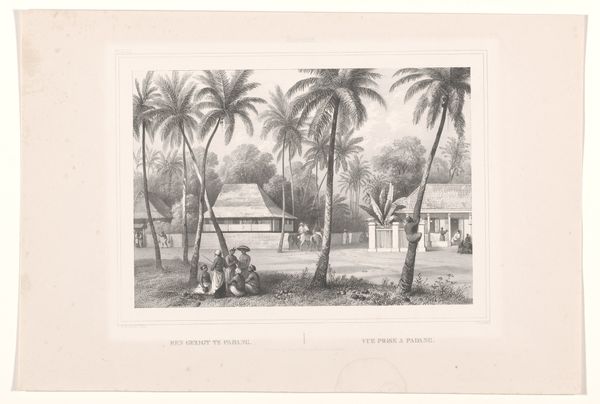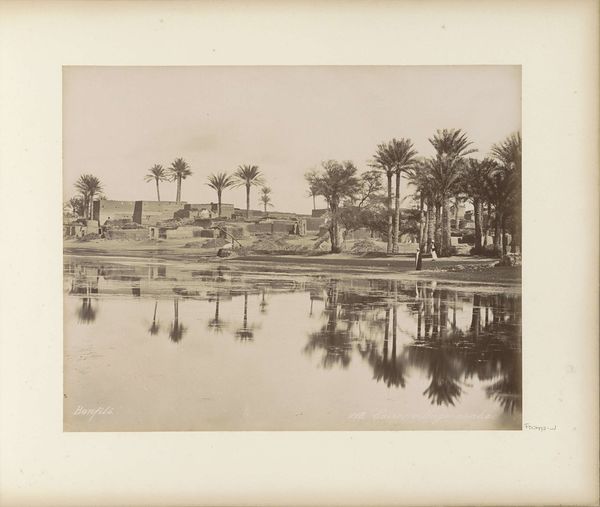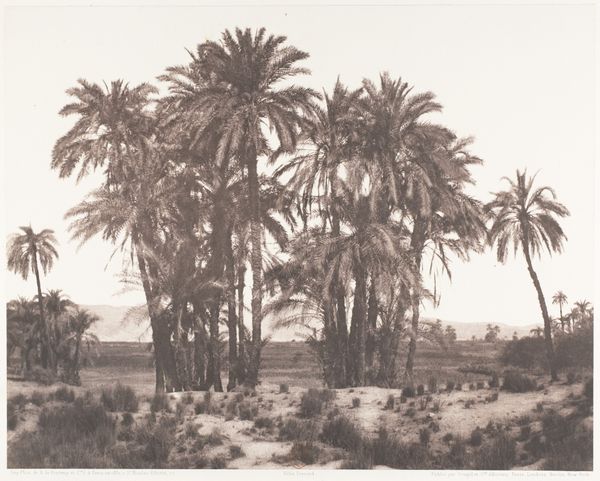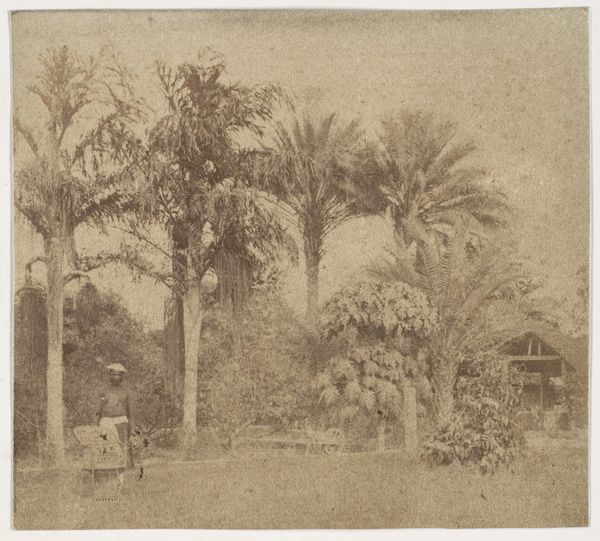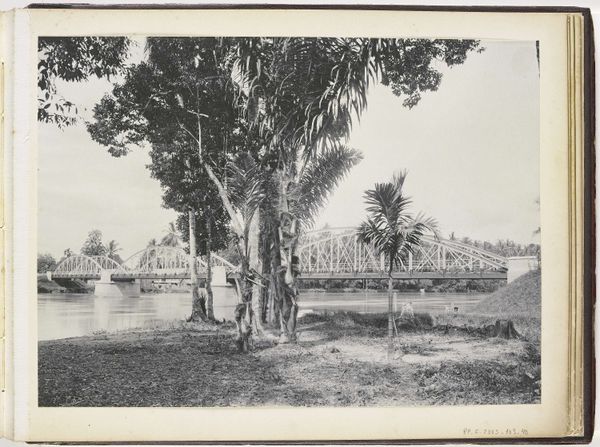
Herder en grazende buffels bij een hutje onder dadelpalmen, vermoedelijk in Egypte c. 1870 - 1890
0:00
0:00
photography, albumen-print
#
landscape
#
photography
#
orientalism
#
albumen-print
#
realism
Dimensions: height 214 mm, width 276 mm
Copyright: Rijks Museum: Open Domain
Curator: This albumen print, dating from about 1870 to 1890, presents a pastoral scene titled "Herder en grazende buffels bij een hutje onder dadelpalmen, vermoedelijk in Egypte" - "Herdsman and grazing buffaloes by a hut under date palms, presumably in Egypt". I'd like your first thoughts. Editor: It strikes me as very still, almost theatrical. The framing and muted tones give it a feeling of being carefully composed rather than spontaneously captured. A tableau, if you will. Curator: The photographer, known as Peridis, definitely appears to be playing with composition, especially the spatial relationships within this orientalist landscape. Note how the lines of trees recede, creating depth that draws the eye. Semiotically, what are they signifying to us? Editor: The trees, particularly the palm trees, certainly place it geographically and culturally. But it's also about constructing a particular vision of Egypt, viewed through a western lens that aestheticizes a certain quiet simplicity. The juxtaposition of the herdsman and buffalo against that receding landscape is intentional, suggesting both harmony and perhaps even dominance. The role of the image then becomes intertwined with notions of colonialism. Curator: Agreed. The materiality of the albumen print itself contributes too; that warm sepia tone enhances this idea of looking back to a distant, romanticized past. However, if you focus on the play of light and shadow, the very formal construction of elements within the rectangle, one could view the narrative and geographical content merely as incidental to its artistic worth. Look at the textures of the palm trees in the background. The hut, positioned as it is along a strong diagonal. The photographer almost gives us a lesson on perspective. Editor: Precisely, and that formalism, that self-conscious artistry, adds another layer of meaning when considering its public role at the time. These photographs were often intended for western consumption, feeding into specific expectations and reinforcing prevailing social narratives about the "exotic" Orient. The composition, tonality—everything—becomes part of that visual language, no? Curator: Certainly. It’s this dialectic between its formal construction and the socio-historical context that continues to captivate. What seems initially serene holds a layered visual dialogue. Editor: Absolutely. A window to look through to past cultural perceptions. A very picturesque slice of a place and time.
Comments
No comments
Be the first to comment and join the conversation on the ultimate creative platform.
